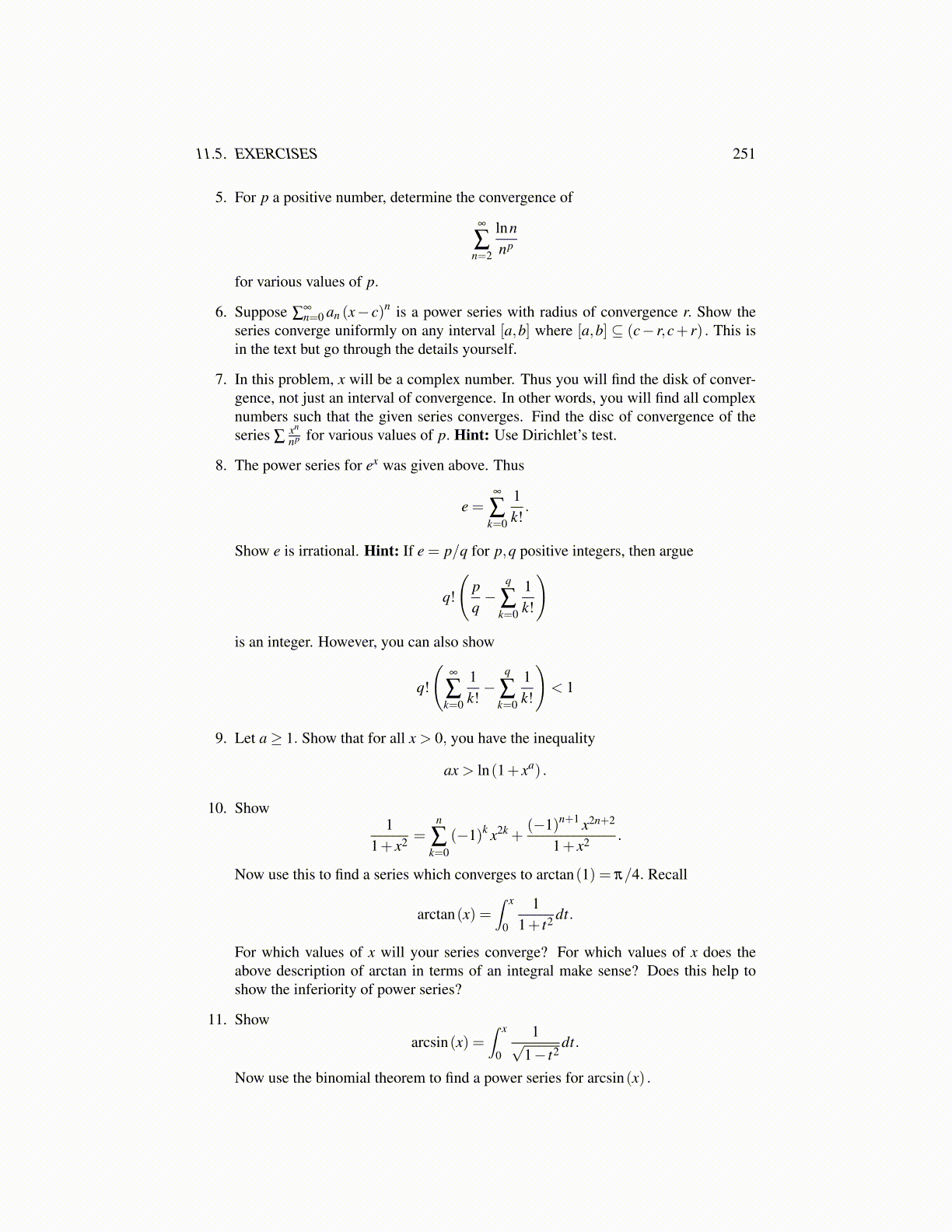
11.5. EXERCISES 251
5. For p a positive number, determine the convergence of
∞
∑n=2
lnnnp
for various values of p.
6. Suppose ∑∞n=0 an (x− c)n is a power series with radius of convergence r. Show the
series converge uniformly on any interval [a,b] where [a,b] ⊆ (c− r,c+ r) . This isin the text but go through the details yourself.
7. In this problem, x will be a complex number. Thus you will find the disk of conver-gence, not just an interval of convergence. In other words, you will find all complexnumbers such that the given series converges. Find the disc of convergence of theseries ∑
xn
np for various values of p. Hint: Use Dirichlet’s test.
8. The power series for ex was given above. Thus
e =∞
∑k=0
1k!.
Show e is irrational. Hint: If e = p/q for p,q positive integers, then argue
q!
(pq−
q
∑k=0
1k!
)is an integer. However, you can also show
q!
(∞
∑k=0
1k!
−q
∑k=0
1k!
)< 1
9. Let a ≥ 1. Show that for all x > 0, you have the inequality
ax > ln(1+ xa) .
10. Show1
1+ x2 =n
∑k=0
(−1)k x2k +(−1)n+1 x2n+2
1+ x2 .
Now use this to find a series which converges to arctan(1) = π/4. Recall
arctan(x) =∫ x
0
11+ t2 dt.
For which values of x will your series converge? For which values of x does theabove description of arctan in terms of an integral make sense? Does this help toshow the inferiority of power series?
11. Showarcsin(x) =
∫ x
0
1√1− t2
dt.
Now use the binomial theorem to find a power series for arcsin(x) .